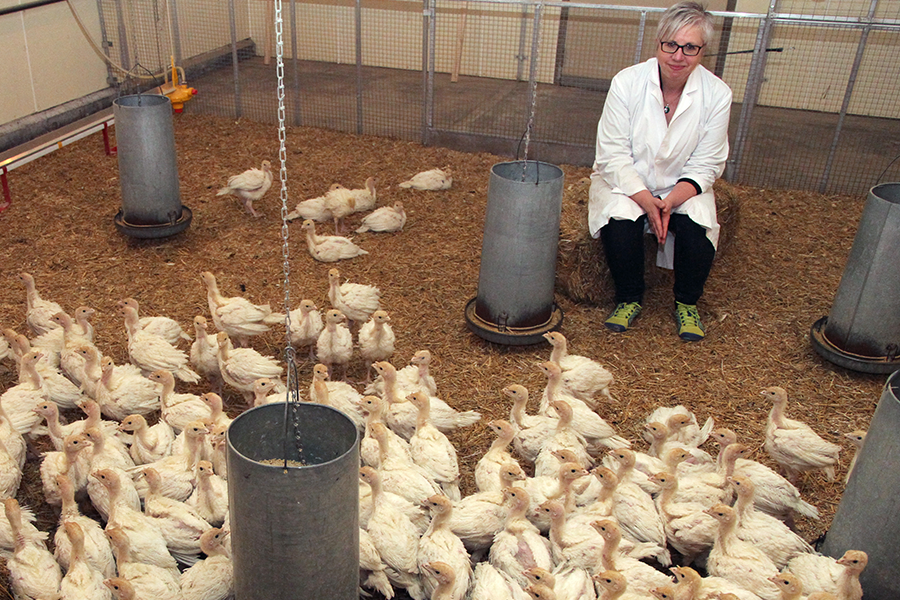
Talking turkey
Karen Schwean-Lardner never thought she would become a poultry researcher. Raised on a pig farm, she was not very fond of chickens.
By Lesley Porter"I was terrified of chickens!" she said with a laugh. "I just didn't like them and they didn't like me."
She eventually conquered her fowl fear while completing her undergraduate, master's and doctoral degrees in agriculture at the U of S. Now a researcher and assistant professor in the Department of Animal and Poultry Science, Schwean-Lardner is talking turkey.
Her research focuses on the welfare and productivity of commercial poultry, specifically hens, turkeys and broiler chickens. This includes finding the optimal stocking density for them—that is, the number of birds that can be contained within a particular area, so that they are not just happy and healthy, but also maintaining ideal production numbers.
"You have to give them a certain amount of space and light as well as dark," she said. "One objective is to look at what happens to the birds when they're raised in different stocking densities."
Her current project is a 16-week trial looking to find the ideal stocking density for commercial turkeys.
"We're trying to figure out if the density makes any difference to the well-being of the bird," she said. "We're also concerned about what people have to pay for food, so we're looking at production practices as well.
Finding that perfect balance—happy birds, happy consumers—is the goal of her research conducted at the Poultry Centre on campus. The facility contains eight rooms, all with varying numbers of young turkeys in them, ranging from low density to high density. Here, Schwean-Lardner and her graduate student, Kailyn Beaulac, will try to get an overall picture of what density level is best for the birds. This includes studying their social and physiological behaviour (such as stress responses) while being mindful of industry production parameters.
"We're seeing what's optimal, both from a production standpoint and from a welfare standpoint," said Beaulac.
For a very logical reason, Schwean-Lardner uses only male turkeys in her research.
"They grow faster and get bigger than females do," she explained. "When I did the original research application, we thought, ‘if we study males, that's the worst-case scenario.' That's why we chose to use males."
While turkeys and their smaller cousins, the chicken, have a similar social structure "in that they live in nature in small groups," the two are otherwise quite different. "It's like comparing two breeds of dogs," she said. "Turkeys are more curious than broilers. I have no idea why, and don't know that anyone has any idea why. They just are."
Regardless, Schwean-Lardner is happy to have gotten over her avian aversion.
"I love working with the birds," she cooed. "They're so cool!"

